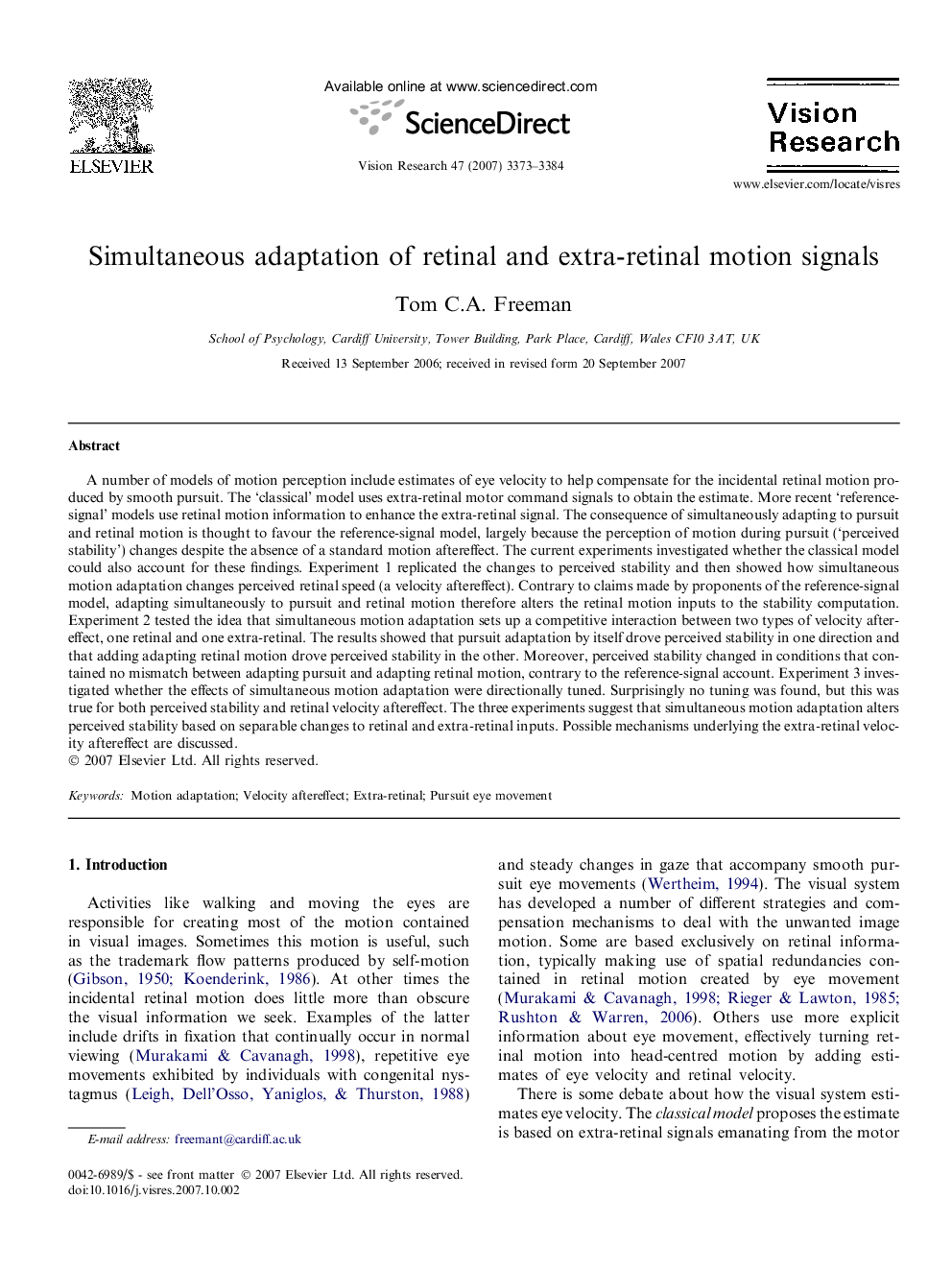| Article ID | Journal | Published Year | Pages | File Type |
|---|---|---|---|---|
| 4036022 | Vision Research | 2007 | 12 Pages |
A number of models of motion perception include estimates of eye velocity to help compensate for the incidental retinal motion produced by smooth pursuit. The ‘classical’ model uses extra-retinal motor command signals to obtain the estimate. More recent ‘reference-signal’ models use retinal motion information to enhance the extra-retinal signal. The consequence of simultaneously adapting to pursuit and retinal motion is thought to favour the reference-signal model, largely because the perception of motion during pursuit (‘perceived stability’) changes despite the absence of a standard motion aftereffect. The current experiments investigated whether the classical model could also account for these findings. Experiment 1 replicated the changes to perceived stability and then showed how simultaneous motion adaptation changes perceived retinal speed (a velocity aftereffect). Contrary to claims made by proponents of the reference-signal model, adapting simultaneously to pursuit and retinal motion therefore alters the retinal motion inputs to the stability computation. Experiment 2 tested the idea that simultaneous motion adaptation sets up a competitive interaction between two types of velocity aftereffect, one retinal and one extra-retinal. The results showed that pursuit adaptation by itself drove perceived stability in one direction and that adding adapting retinal motion drove perceived stability in the other. Moreover, perceived stability changed in conditions that contained no mismatch between adapting pursuit and adapting retinal motion, contrary to the reference-signal account. Experiment 3 investigated whether the effects of simultaneous motion adaptation were directionally tuned. Surprisingly no tuning was found, but this was true for both perceived stability and retinal velocity aftereffect. The three experiments suggest that simultaneous motion adaptation alters perceived stability based on separable changes to retinal and extra-retinal inputs. Possible mechanisms underlying the extra-retinal velocity aftereffect are discussed.
